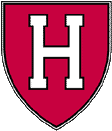A familiar school is the last unbeaten in women’s ECACHL play, yet winning in an unfamiliar way.

Harvard’s 5-1 triumph over St. Lawrence over Thanksgiving weekend left the Crimson 6-0 in league play for the first time since the 2002-03 season. However reminiscent the current success may be of the past, this Harvard team is unlike any before in the spread of scoring and speed throughout the roster this early in the season.
Much like Crimson teams of the recent past, Harvard in its first two weeks relied heavily on the power play which scored 9 of the team’s 11 goals. But in this weekend’s 5-0 win over No. 10 Clarkson and 5-1 win over No. 3 St. Lawrence, Harvard scored 7 of 10 at even strength.
Prior to Saturday, Harvard had not scored four even-strength goals or received goals from five different players against a nationally-ranked opponent since a 6-1 win over the Saints in the 2004 ECAC championship game. Saturday’s win was also notable in that the Crimson received even-strength goals from all three lines.
The Crimson’s success is a tribute to its improved team speed. The even strength goals were mostly swift conversions in transition, not battles for rebounds or scrums in front of the net. Harvard tri-captain Caitlin Cahow says this is the fastest Harvard team she has played on.
“We’ve had speed in the past but we’re really using it this time, and that’s something that’s changing,” Cahow said. “We’re really forcing everyone to make tough decisions and using everyone on the ice to be offensive, so it’s really a great balance this year of offense and defense working together and everyone playing a role in every zone.”
Harvard’s speed helped prevent St. Lawrence from making a dent in the Crimson offensive end for most of the game. Harvard outshot the Saints in every period. The four-minute stretch in the second period between Harvard’s third goal and Saints first was one of the few times St. Lawrence sustained consistent pressure in the Crimson end.
“They came after us and made us pay for our mistakes,” Flanagan said. “Harvard had a lot of energy and really worked hard and forced us into a lot of mistakes, so I give them a lot of credit. They always played hard and you can tell they’re highly motivated.”
The Crimson’s fresh faces are one source of speed. Four Crimson freshmen forwards and one defenseman have seen plenty of ice. Sophomore Anna McDonald, a transfer from Boston College, netted the first goal against the Saints by deflecting in a feed in transition from linemate Sarah Wilson. Freshman Kate Buesser tallied a critical insurance goal for a 4-1 lead in the third.
“We have a really neat freshman class, and a transfer sophomore who has added a lot right off the bat, so we’ve got a lot of personality,” said Harvard coach Katey Stone.
The players who have developed through the Harvard program are gaining in quickness as well. Cahow gave credit to Dan Perlmutter, assistant director of strength and conditioning coach, for building the team’s fitness, strength, and power since his arrival during her sophomore year.
Just having speed is not enough, however. Harvard made major strides in using its speed well this past weekend.
“It’s one thing to have speed, it’s another thing to know how to use it, and young kids don’t always know how to use it,” said Harvard coach Katey Stone. “That’s a lot of what we talk about right now — putting the puck and themselves in places where they can use their speed.”
Making such smart decisions is most critical in the defensive end, and Harvard struggled there early on. The Crimson penalty kill ranked among the nation’s worst after the Crimson’s first weekend. Since then the team is 18-for-18. When the Crimson defense has lapsed, sophomore goalie Christina Kessler has picked up the slack, allowing five goals in her first six games with a nation-leading .960 save percentage.
“As a defenseman, we evolve a bit later than most — it’s a technical, thinking game from the defensive end,” Cahow said. “Over time, I’ve gotten comfortable at the defensive position and also found a way to fit my offensive game into that role. You can’t do too much in college hockey any more — you really have to be a consistent player in every end. It’s really about moving the puck as well as can and seeing the ice and making my teammates look good.”
While this Harvard team is unique in how the quickness permeates through the roster, it still shares many characteristics with Crimson teams of the past. One constant is the recruiting and coaching philosophies from Stone at the top.
“I think this is the best place to play college hockey if you want a first-class education and a first-class hockey experience,” Stone said. “Kids that shy away from that challenge are probably not that the right kids for us. Every kid in our program earns their stripes, and they earn their playing time — it’s not going to be handed to them on a silver platter. We’re very clear about that in recruiting, that they’re going to come in and work their tails off and good things will happen for them, but they’re going to part of something bigger than themselves. In today’s world, some kids are ready for that, and some kids are not.”
Though Stone’s coaching philosophy may not be popular with every parent or athlete, it’s hard to argue with its results. Dating back to the school’s national championship season of 1998-99, Harvard’s achievements include a 229-62-16 overall record, five straight NCAA tournament appearances from 2003-07, three straight NCAA final games from 2003-05, and three straight ECACHL titles from 2004-06. This Crimson team looks poised to add to those achievements — but in its own way.


